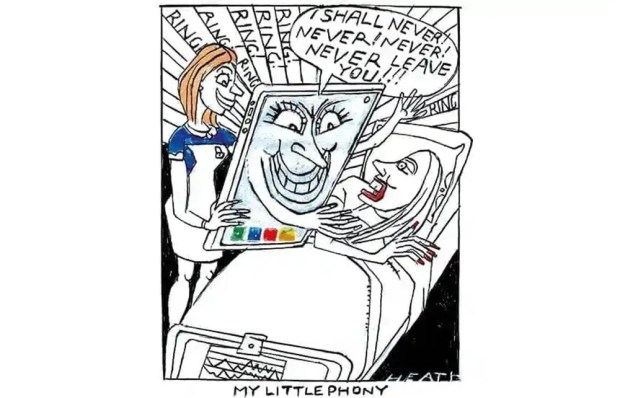The recreational use of laughing gas has been banned in the UK from today. We are only the second country in the world to make the possession of nitrous oxide illegal – users of the now-class C drug will get up to two years in prison while dealers face jail time of up to 14 years. Though two government-led reviews concluded that the substance wasn’t dangerous enough to make it illegal, the growing evidence of insidious and long-lasting side effects suggests otherwise.
On the surface, laughing gas appears to be a fairly harmless drug. It doesn’t have a giveaway smell or any obvious adverse side-effects – and it’s cheap. Post-pandemic there has been a huge rise in the number of teenagers and young adults taking it: today there are more than 600,000 regular users in the UK. After the Notting Hill Carnival, there were more than 3.5 tonnes of canisters left behind. The government’s move to ban the substance is, it says, aimed at cracking down on anti-social behaviour and reducing the potentially crippling health risks its misuse can lead to.
Simply look to Holland, where cannabis is legal and yet the sale of laughing gas is tightly regulated.
Inhaling the substance gives users a fleeting high, its effects lasting only seconds. Then it’s straight back to normality. It’s popular because it’s such a quick hit. But prolonged use can have devastating consequences, causing nerve damage, paralysis, and, in extreme (and rare) cases, death.
The gas is formally known as nitrous oxide, discovered by Joseph Priestley in 1772. Today it’s used as a dental anaesthetic and in cooking for making whipped cream. (Internet data will, no doubt, be able to show that there’s a raft of teenagers very into dessert toppings.)
Once, nitrous oxide used to come in small silver canisters called ‘whippets’. Now, the canisters on the streets are much larger – and more dangerous as a result. It’s harder for users to know how much they are inhaling from the bigger canisters and they are therefore much more likely to take in greater amounts of the drug. ‘People are getting much higher doses than what they’re used to,’ one doctor says. ‘For that reason, we’re seeing many more people coming in with complications.’
‘One of my patients came to hospital paralysed. He is now beginning to walk, but he can’t run,’ Nikos Evangelou, a consultant neurologist based in Nottingham, tells me. ‘The last couple of guys I saw were also paralysed when they presented to hospital. People are slow to present because they think the tingling and numbness is the “normal action” of the drug.’
Laughing gas-induced nerve damage is, in fact, fast becoming an epidemic. In a recent TikTok video, consultant neurologist David Nicholl said he’d seen a significant uptick in cases presenting in hospital post-pandemic. ‘In the last 20 years,’ he said, ‘a consultant would maybe see one or two cases, but then it started picking up in the pandemic, so during lockdowns we would maybe see a case every couple of months or so but now we see one every week. I would describe it as an epidemic, and that’s not just me saying that: colleagues would too.’
So how does the drug work? Inhalation of nitrous oxide can lead to B12 deficiency. At first, symptoms may seem harmless: users’ hands and feet might tingle. But, as it progresses, it gets far more serious.
The initial ‘buzzing’ sensation in the user’s feet evolves to become a loss of sensation in their limbs, causing difficulty walking. Dr Stephen Keddie, a senior neurology doctor working in East London, describes how bad it can get: ‘We’ve had people come in with complete loss of sensation in the lower limbs, with difficulty walking because they’ve got no idea where their limbs are in space – we call that proprioceptive loss – and that can make them walk with a very broad-based gait.’
And it’s not just lower limbs that are impacted: patients find the tingling and numbness can occur in their hands, causing a loss in their manual dexterity. As a result, people have reported difficulties putting on makeup, playing computer games, typing or using a computer mouse, and even writing.
The brain is affected too: patients’ cognitive processes slow down. Some can’t talk properly, others suffer memory problems. ‘Because the drug affects the spinal cord, it’s not just walking that’s affected. I’ve seen many people who are incontinent, and people who have erectile dysfunction,’ Dr Keddie says. ‘These are all things that are underreported.’ Worst of all? Nerve damage caused by B12 deficiency is not fully reversible.
So could youngsters, once perfectly healthy, permanently lose their ability to walk or run as a result of abusing nitrous oxide? ‘It’s conceivable if you have severe enough damage in your spinal cord’, a neurologist tells me, ‘that you could remain wheelchair-bound for life.’
‘It’s devastating,’ another neurologist says as he recalls the patients that he’s seen. ‘These are young people who have their whole lives ahead of them, unable to walk or go to the toilet by themselves as a result of using Nos.’
Patients who are treated in hospital receive intravenous vitamin B12 injections until they can at least walk with the aid of a stick. Once discharged, they continue on oral B12 medication at home.
While some see an improvement in symptoms, a full recovery isn’t thought possible; many remain disabled in some way. One 25-year-old from London said that her laughing gas use has caused damage to her back, and now, her dad is her full-time carer. ‘I know there’s no way of reversing the damage I’ve done, and I feel like my life’s over – and I’m only 25,’ she told the Sun.
It has reportedly become the preferred drug of choice in many Asian communities. Dr Keddie says that many of those presenting in his East London clinic are from Asian backgrounds. ‘You do tend to see quite a lot of people who are Muslim.’ Youngsters from these backgrounds who can’t drink are likely using laughing gas because it is hard to spot. While cannabis has a characteristic smell, and often causes its users’ eyes to go red, laughing gas is not at all conspicuous.
Laughing gas is not thought to be physiologically addictive, like heroin. Yet several doctors I spoke to said that they saw their patients continue to take it even after suffering serious mobility and nerve damage. A number of doctors also told me that their patients often didn’t turn up for their follow-up appointments either, meaning that they don’t see how they’re doing several months on and cannot fully predict how long-lasting or severe the impacts of the drug are.
The sad reality is that we are stabbing in the dark when it comes to dealing with laughing gas; long-term data has not been collected, and many studies are only just beginning now. ‘The spectrum of disease is so varied,’ Dr Keddie says, ‘and we don’t know what the risk factors are. Using evidence from friends as a reason why you think you’re going to be okay is absolutely not evidence-based whatsoever.’
The ban on nitrous oxide possession may seem disproportionate to some. But the signs have been there for a while: as ‘hippy crack’-related hospital admissions increase, simply look to Holland, where cannabis is legal and yet the sale of laughing gas is tightly regulated.
While doctors working with the Advisory Council on the Misuse of Drugs (ACMD) on laughing gas are right that ‘no single recommendation on its own is likely to be sufficient to successfully reduce the harms associated with nitrous oxide use’, this is an important first step. Treating it as harmless for so long has left too many young people disabled by the horrifically debilitating effects of the drug.
Got something to add? Join the discussion and comment below.
Get 10 issues for just $10
Subscribe to The Spectator Australia today for the next 10 magazine issues, plus full online access, for just $10.




















Comments
Don't miss out
Join the conversation with other Spectator Australia readers. Subscribe to leave a comment.
SUBSCRIBEAlready a subscriber? Log in